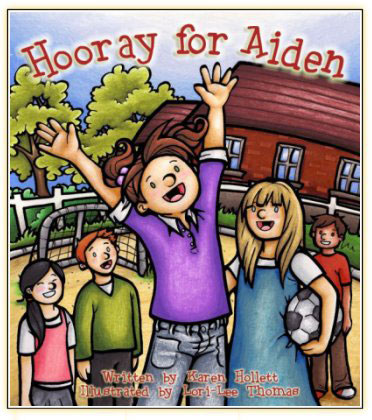
That meeting, the details of which I had been planning for several months beforehand, led in turn to my involvement in the organizing of the first national conference for people who stutter, that was ever held in Canada. The latter conference took place in August 1991; it led to the founding of an organization that is now known as the Canadian Stuttering Association. In those years, I also became active in community self-organizing at the international level.
Awareness through education
Today, I continue my work to educate the public about stuttering by making presentations to elementary school students in the Greater Toronto Area. For the past couple years I’ve been invited by teachers, who are familiar with my previous volunteer work, to make such presentations.
I recently spoke at the school library of Nelson Mandela Public School, a new Peel District School Board school in Brampton, Ontario north of Toronto. The acoustical environment in the library made for a great setting for a talk. When the acoustics are just right everybody can hear a presenter’s every word, even without the use of a microphone and amplifier.
I was delighted that a student at the school, now in Grade 4, mentioned to us, during one of our discussions, that he had attended the same presentation at another school in Brampton a couple of years earlier.
Hooray for Aiden
In the presentations in Brampton, I have spoken for a full day, or else for a half day, at a time. Two or three classes of elementary students would come to the library, and I would spend about 40 minutes each time, sharing my story and reading aloud “Hooray for Aiden”, a children’s book about a child who stutters.
Years ago, I offered feedback to the author, Karen Hollett of Yellowknife, during the final stages of the production of the book. I considered this a special opportunity to offer comments as the final draft of the text for the book was being written.
Participation
I make the presentation an interactive one.Whenever I speak to a class or classes of elementary students, I write out a few jot notes which serve as the outline for each presentation. I always make a point to time the talk in such a way that I have enough time to complete the reading of “Hooray for Aiden” before the allotted time, for the talk, has elapsed. I also make it a point to make the presentation an interactive one. Students have many opportunities to ask for additional information, and to make comments, pretty well all through the course of my presentation.
I usually begin each talk by asking the students if they know what the topic of my talk will be, and sometimes a child will say, “You’re here to tell a story.” Or if they have received more specific information from their teacher, someone says, “You’re going to talk about stuttering.” I ask them if they know what stuttering is; some of them will put up their hand and explain. Usually, a classroom of students has a pretty good sense that stuttering refers to difficulty in getting words out, as well as the repetition of words.
The students use words such as: “Embarrassed," “frustrated,” “lonely,” “sad,” when I ask them how stuttering would feel I continue with the story about the time, in my late teens or early twenties, when I tried to phone someone but had trouble with saying “hello.” After 30 seconds or so, without managing to say a word, I just hung up the phone. I ask students to imagine how that would have felt. The students invariably use words such as: “Embarrassed;" “frustrated;” “lonely;” “sad.”
Often, there is time for a Q & A, after I have read the book to the class, or sometimes we arrange a short Q & A before I read the book.
Take-away
There’s always extensive discussion; the students know from the outset that I’m interested in their thoughts, and in any questions that occur to them. The talk is really more of a conversation than a lecture. Invariably, some of the students make a point of thanking me, after the talk is over, for my presentation. Often, students and I chat briefly in the hallways, if we happen to run into each other again during the course of my visit.
My sense is that the students enjoy hearing the story of a person who has achieved success in life, even thought they happened to be faced with some major challenges during the early school years – in my case, as a person who stutters. Students also enjoy learning something new – in this case, about stuttering – that they had not known before.
Jaan Pill is a retired teacher who is active as a volunteer. You can read about him at his website Preserved Stories. You can also see his video, Stuttering– a Listener’s Guide, which is at Vimeo.com and has been linked to by the Canadian Stuttering Association.
